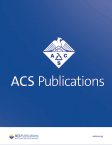摘要PO3-12-12:两名乳腺癌患者在接受Fam-trastuzumab deruxtecan治疗后出现轴神经病变:病例报告
IF 3.4
Q2 PUBLIC, ENVIRONMENTAL & OCCUPATIONAL HEALTH
引用次数: 0
摘要
简介Fam-trastuzumab deruxtecan(T-DXd)已获美国 FDA 批准用于治疗 HER2 阳性(HER2+)和 HER2 低的转移性乳腺癌(BC)。周围神经病变是 T-DXd 的副作用之一,发生率为 13%。在此,我们将讨论两名在接受 T-DXd 治疗后出现躯干麻痹的 BC 患者(pts)。病例 1.一名 51 岁女性,左侧乳腺癌 IIIB cT4N2M0 期,雌激素受体阳性(ER+)、孕激素受体阳性(PR+)和 HER2+,接受了多西他赛、卡铂、曲妥珠单抗和百妥珠单抗(TCHP)新辅助治疗,随后进行了乳房切除术和腋窝淋巴结清扫术,病情降级为 ypT3N2a。她参加了一项临床试验,对新辅助治疗后有残留疾病的 HER2+ BC 进行 T-DXd 与标准治疗的比较,并被随机分配到 T-DXd 组。她还接受了胸壁质子辅助放射治疗。在服用 T-DXd 第三个周期一周后,她的躯干和上下肢近端出现了 3 级麻痹,称她无法弯腰或进行日常生活活动。她没有出现相关的乏力或周围神经病变。在开始使用加巴喷丁并将第 4 周期的 T-DXd 推迟一周后,她的症状改善到了 1 级。她恢复了 T-DXd,并按照方案减少了剂量,同时增加了加巴喷丁的剂量。神经科医生将她的感觉症状定位在 T5 至 T9。医生建议她进行脊柱核磁共振成像检查,但由于存在组织扩张器而无法进行。减量服用 T-DXd 和继续服用加巴喷丁后,麻痹症状得到了控制。病例 2.女性,56 岁,ER+、PR+、HER2 阴性 BC,最初于 1990 年确诊,2005 年局部复发,接受乳房切除术、辅助化疗和辅助内分泌治疗,2017 年出现肺、肝、骨和皮肤转移性疾病。她接受了多线内分泌治疗,包括芳香化酶抑制剂和氟维司群,以及 cdk4/6 抑制剂和依维莫司,但要么病情进展,要么不能耐受所有治疗。2022 年的皮肤活检证实了转移性乳腺癌,ER+、PR+、HER2 低(IHC2+、FISH 非扩增)。随后,她接受了 T-DXd,临床和影像学对治疗均有反应。T-DXd 第 8 个周期后,患者因躯干和皮肤剧烈灼痛而住院。包括胸部、腹部、骨盆 CT 和脊柱 MRI 在内的放射学评估未发现疼痛的病因,并显示肝脏和骨骼的转移性疾病稳定,没有脊髓或神经根受压的迹象。服用普瑞巴林后症状有所改善。她又接受了一个周期的T-DXd治疗,并减少了剂量,但最终拒绝了进一步治疗。停用 T-DXd 5 个月后症状缓解。讨论。这些病例代表了两名接受 T-DXd 治疗的 BC 患者发生轴性神经病变的不寻常事件。鉴于他们的症状相似,这些发现可能是 T-DXd 的异常不良反应。随着 T-DXd 适应症的不断扩大,临床医生应注意这种不常见的潜在毒性。引用格式:Lauren Botero, Katharine McNeill, Della Makower.接受法莫芦单抗德鲁替康治疗的两名乳腺癌患者的轴神经病变:病例报告[摘要]。In:2023 年圣安东尼奥乳腺癌研讨会论文集;2023 年 12 月 5-9 日;德克萨斯州圣安东尼奥。费城(宾夕法尼亚州):AACR; Cancer Res 2024;84(9 Suppl):Abstract nr PO3-12-12.本文章由计算机程序翻译,如有差异,请以英文原文为准。
Abstract PO3-12-12: Axial Neuropathy in Two Breast Cancer Patients receiving Fam-trastuzumab deruxtecan: A Case Report
Introduction. Fam-trastuzumab deruxtecan (T-DXd) is FDA approved for metastatic HER2-positive (HER2+) and HER2-low breast cancer (BC). Peripheral neuropathy is a side effect of T-DXd, with an incidence of 13%. Here we discuss two BC patients (pts) who presented with paresthesias of the trunk after receiving T-DXd.
Case 1. A 51-year-old female with Stage IIIB cT4N2M0 left BC, estrogen receptor positive (ER+), progesterone receptor positive (PR+) and HER2+ was treated with neoadjuvant docetaxel, carboplatin, trastuzumab, and pertuzumab (TCHP), followed by mastectomy and axillary lymph node dissection, with downstaging to ypT3N2a disease. She was enrolled on a clinical trial comparing T-DXd with standard treatment for HER2+ BC with residual disease after neoadjuvant therapy, and was randomized to T-DXd arm. She also received adjuvant proton radiation therapy to the chest wall. One week after her third cycle of T-DXd she developed Grade 3 paresthesias on her trunk and proximal upper and lower extremities, stating she could not bend over or perform activities of daily living. She did not experience associated weakness or peripheral neuropathy. Symptoms improved to Grade 1 after initiation of gabapentin and delay of cycle 4 T-DXd by one week. She resumed T-DXd with dose reduction per protocol, and increase in gabapentin dose. She was seen by neurology who localized her sensory findings to T5-T9. She was recommended to undergo MRI spine, but was unable to do so, due to presence of tissue expander. Paresthesias have been controlled on dose reduced T-DXd and continued gabapentin.
Case 2. A 56-year-old female with ER+, PR+, HER2-negative BC initially diagnosed in 1990, with local recurrence in 2005, treated with mastectomy, adjuvant chemotherapy, and adjuvant endocrine therapy, followed by development of metastatic disease to lung, liver, bone and skin in 2017. She received multiple lines of endocrine therapy, including aromatase inhibitors and fulvestrant, with cdk4/6 inhibitors and everolimus, but either progressed or was intolerant to all treatments. Skin biopsy in 2022 confirmed metastatic BC, which was ER+, PR+, and HER2 low (IHC2+, FISH nonamplified). She then received T-DXd, with clinical and radiographic response to treatment. After cycle 8 T-DXd, the patient was hospitalized for severe burning pain of her trunk and skin. Radiologic evaluation, including CT chest, abdomen, pelvis, and MRI spine, did not show an etiology of her pain, and showed stable metastatic disease to liver and bones, without evidence of cord or nerve root compression. Symptoms improved on pregabalin. She received an additional cycle of T-DXd with dose reduction, but ultimately declined further treatment. Symptoms resolved within 5 months of discontinuation of T-DXd.
Discussion. These cases represent unusual events of axial neuropathy in two BC patients receiving T-DXd. Given the similarity of their symptoms, these findings may represent an unusual adverse effect of T-DXd. As the indications for T-DXd continue to expand, clinicians should be aware of this uncommon potential toxicity.
Citation Format: Lauren Botero, Katharine McNeill, Della Makower. Axial Neuropathy in Two Breast Cancer Patients receiving Fam-trastuzumab deruxtecan: A Case Report [abstract]. In: Proceedings of the 2023 San Antonio Breast Cancer Symposium; 2023 Dec 5-9; San Antonio, TX. Philadelphia (PA): AACR; Cancer Res 2024;84(9 Suppl):Abstract nr PO3-12-12.
求助全文
通过发布文献求助,成功后即可免费获取论文全文。
去求助
来源期刊

ACS Chemical Health & Safety
PUBLIC, ENVIRONMENTAL & OCCUPATIONAL HEALTH-
CiteScore
3.10
自引率
20.00%
发文量
63
期刊介绍:
The Journal of Chemical Health and Safety focuses on news, information, and ideas relating to issues and advances in chemical health and safety. The Journal of Chemical Health and Safety covers up-to-the minute, in-depth views of safety issues ranging from OSHA and EPA regulations to the safe handling of hazardous waste, from the latest innovations in effective chemical hygiene practices to the courts'' most recent rulings on safety-related lawsuits. The Journal of Chemical Health and Safety presents real-world information that health, safety and environmental professionals and others responsible for the safety of their workplaces can put to use right away, identifying potential and developing safety concerns before they do real harm.
 求助内容:
求助内容: 应助结果提醒方式:
应助结果提醒方式:


